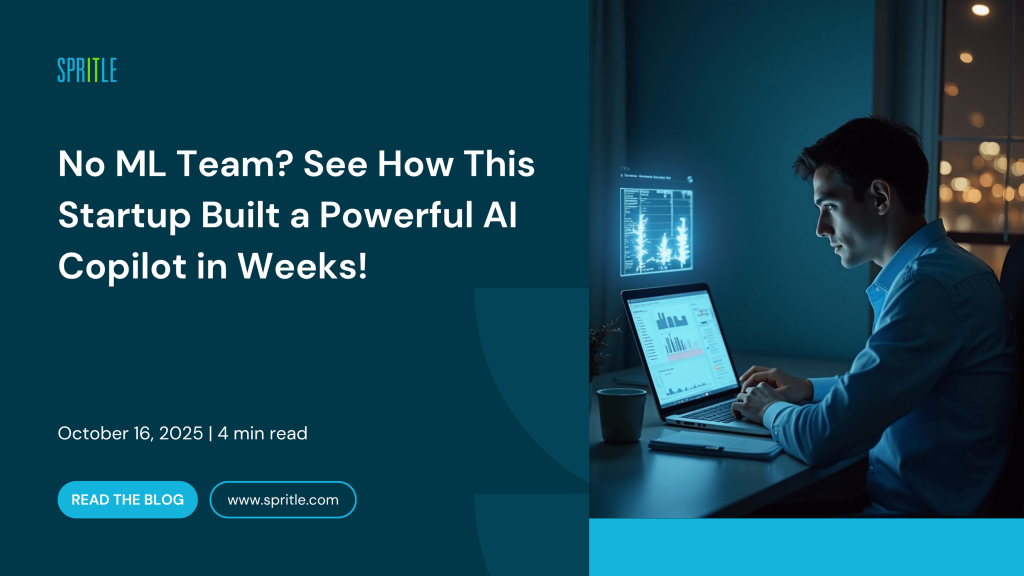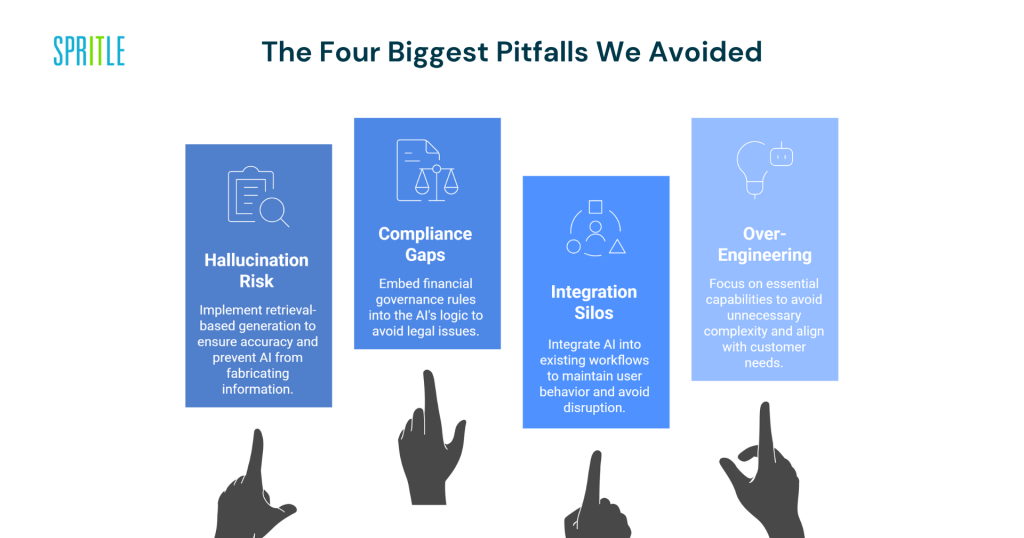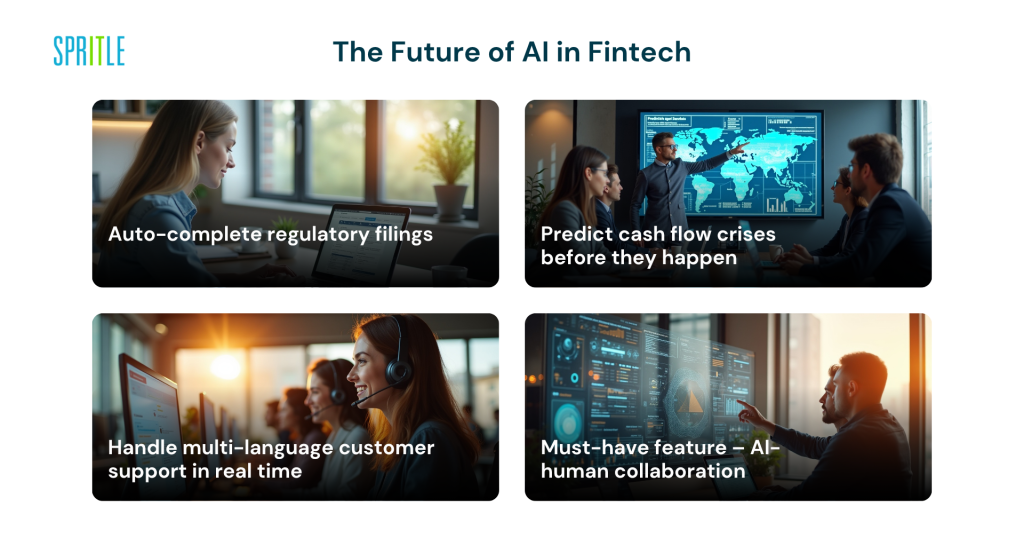
The “We Need AI” Moment
It’s a scene many founders know too well — the market is shifting fast, competitors are announcing shiny new AI features, and customers are asking the inevitable question:
“When will your product have AI that can just do it for me?”
You already have a great product, one your users love. But now the expectations have changed. Everyone wants AI capabilities — automation, prediction, personalization — the works.
The challenge?
Hiring a team of machine learning engineers is expensive, time-consuming, and out of reach for most growing startups. Even a single senior ML engineer could eat up a massive chunk of your annual budget.
So how can startups keep up with the AI revolution without building a full-blown data science department?

The Big AI Myth
There’s a widespread misconception that building AI means:
- Hiring a data science team.
- Collecting millions of data points.
- Training models from scratch.
- Spending months (or years) before seeing results.
For most startups, that’s a fast path to burnout — not innovation.
The truth is, modern AI isn’t about reinventing the wheel. It’s about using what already exists smartly — leveraging pre-trained models, connecting them with your data, and deploying solutions that deliver business value immediately.
What startups really need isn’t a “machine learning team.”
They need an AI copilot — a system that feels intelligent and intuitive to users, built without deep ML infrastructure.
Step One: Reframing the Goal
Before jumping into model selection or architecture, the first step is to clarify what AI should actually do for your users.
Ask yourself:
- What outcomes should the AI deliver?
- What decisions should it help users make?
- What data do you already have access to?
This reframing turns the problem from “let’s build a model” into “let’s build a smarter experience.”
The goal?
To make your AI behave like your user’s smartest, fastest digital assistant — one that understands context, offers insights, and drives action — without needing a single ML engineer on staff.
Step Two: Building Without Building From Scratch
Here’s the secret behind today’s most successful AI copilots: they’re not built from zero.
They’re built from foundation models — large language models (LLMs) and domain-specific AI tools already trained on vast datasets.
What makes them powerful isn’t the model itself, but how it’s customized and integrated into your product.
Here’s how the process works:
- Leverage Pre-Trained Models — Use robust LLMs as the core intelligence layer.
- Domain Fine-Tuning — Feed the AI with your industry’s unique data (anonymized reports, docs, and terminology) so it speaks your language.
- Retrieval-Augmented Generation (RAG) — Connect it to your database or knowledge base, ensuring the AI retrieves real, up-to-date answers instead of hallucinating.
- Compliance Filters — Embed financial, legal, or regulatory safeguards right into its logic.
Within weeks, you can have an AI that can:
- Read PDFs or data files.
- Detect anomalies.
- Suggest corrections.
- Answer user queries with domain-specific accuracy.
This isn’t theoretical — it’s how many startups are launching production-ready AI copilots in record time.
Step Three: Turning AI Into a True Copilot
A chatbot waits for questions.
A copilot takes initiative.
A well-designed copilot does more than respond — it predicts, alerts, and automates.
Examples:
- Flagging missing compliance data before submission.
- Highlighting irregular spending patterns.
- Generating summaries or recommendations automatically.
It’s the difference between a “tool” and a “teammate.”
The best copilots add value before you even ask.
Four Common Pitfalls (and How to Avoid Them)
Many startups stumble while building AI copilots because they treat them as simple add-ons.
Here’s what to avoid:
- Hallucination Risk
Use retrieval-based models to ensure your AI pulls verified, contextual data — not made-up responses. - Compliance Gaps
Especially in fintech and regulated sectors, embed governance rules directly into the AI logic. - Integration Silos
Don’t create a separate AI “widget.” Integrate it naturally into your existing platform. - Over-Engineering
You don’t need every trending feature — focus on solving the 2–3 user problems that truly move the needle.

The Launch
When done right, this approach delivers visible impact — fast.
Imagine your users uploading a messy CSV file.
In seconds, your AI copilot:
- Organizes data into categories.
- Flags missing or incorrect entries.
- Suggests tax-saving opportunities.
- Produces a ready-to-send financial summary.
That’s not just an “AI feature.” That’s a business differentiator.
Startups following this model have seen:
- 70%+ user adoption in the first month.
- 40% reduction in support queries.
- 50% faster task completion times.
All achieved without hiring a single ML engineer.
Why This Works
Success here isn’t about skipping expertise — it’s about borrowing and integrating it efficiently.
- Pre-trained models provide intelligence.
- Fine-tuning adds relevance.
- Integration ensures usability.
- Governance guarantees trust.
This hybrid approach combines speed with reliability — the sweet spot every startup needs.
💼 What It Means for Growing Startups
If you’re a founder or product leader racing to bring AI to your users — you don’t need to start from zero.
You need:
✅ A clear understanding of your users’ problems.
✅ The right existing AI technologies.
✅ A reliable partner who can integrate, fine-tune, and secure your system.
In short: ship value, not infrastructure.
The Future of AI in Copilots
The next wave of fintech and SaaS products won’t compete on dashboards or features — they’ll compete on intelligence.
In the next few years, AI copilots will:
- Auto-complete regulatory filings.
- Predict cash flow crises before they happen.
- Handle multi-language customer support in real time.
- Become a must-have feature, not a nice-to-have.
The winners won’t be the ones who built everything themselves.
They’ll be the ones who launched fast, learned fast, and iterated with the right mix of AI power and human oversight.

Final Takeaway
AI copilots aren’t the future — they’re already here. The question isn’t if you’ll use one, but how fast you can deliver one that works.
And you don’t need an army of ML engineers to make it happen.
💡 At Spritle Software, we specialize in helping startups and enterprises launch AI products that are secure, scalable, and truly useful — without the overhead of building in-house AI teams from scratch.
If you’re ready to turn your AI vision into a working product that delights users and stands up to real-world demands, let’s talk.
